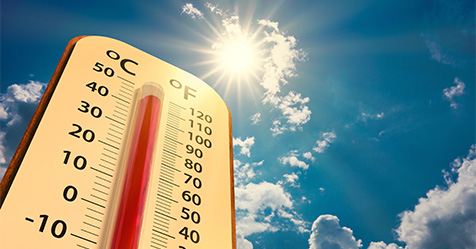We can never overestimate the importance of learning from the people around us. When we’re open to learning from others, we benefit from their experience and can apply their wisdom and knowledge to our own life and work situations. Learning from others is not a passive process, but one that requires work and commitment on our part.
Recently, I asked Sean Fox-Elster, custodial services manager at Michigan State University; Miranda Poskin, certified workloading and kitting specialist; and Scott Perelstein, workloading and routing specialist at Alchemie Academy, to offer their unique perspectives and advice as workloading experts. Here’s what they had to share.
What is workloading and why is workloading important?
Elster: Workloading, at its most basic definition, is the act of determining how long it takes to complete a given task. When you look at the complex nature of a modern cleaning operation, workloading provides a solid foundation by answering the “what, how, where, and when” of your cleaning system. This data provides the information you need to give customers the consistent services that they were promised. This approach also provides you with a data-driven labor budget that comes in handy when defending your budget against inevitable financial threats.
Perelstein: Workloading is the strategic plan of cleaning. It determines who does what, where, and by when. It is the process of mapping out an efficient and effective pathway through a space or building. It’s taking a 10,000-foot view of the area to be cleaned and developing a well-thought-out plan to clean the space, irrespective of the personalities involved. A solid workloading plan provides you with an initial roadmap of how best to clean the space at hand.
Poskin: The importance of workloading for me is consistency. To occupy a space comfortably, it needs to be clean. Workloading allows the evaluation of space and translates it into a reliable system based on industry-standard cleaning practices and times. Once the cleaning workers are properly trained, it really doesn’t matter who performs the work—the results are consistent.
Is there anything fun about being a workloader?
Elster: Workloading is challenging and when those challenges are successfully met there is a sense of great accomplishment. If you are an individual who loves complex interconnected puzzles, then this is definitely a fun endeavor.
Perelstein: There is lots of fun in being a workloader. If you are a puzzle solver, it’s a blast. If you like efficiency and getting the “right” answer, it’s amazingly satisfying. If you like seeing new spaces, architecture, physical space solutions, it gives you access. If you like setting clear expectations and having clear communication channels, it makes your workday fun.
Poskin: One of the most enjoyable aspects of workloading has to be the growth—the constant innovation, whether it be new tools, new technology, or new spaces. The growing industry of autonomous cleaning technology gives us a fun and exciting future. Every once in a while you find yourself in an awesome location you never thought possible.
What are some of the biggest mistakes you have made or seen made when workloading?
Elster: Occasionally, I will come across a spreadsheet that is intended to be the “workloading” of an operation. It usually consists of the square footage of a building (sometimes gross square feet and sometimes cleanable square feet) and the amount of people needed to clean the space. Typically, there is no supporting reference material as to the cleaning system or the tools, and it is usually based on an experienced best guess. This is a mistake as workloading cannot be created in a bubble. The very purpose of workloading is to define the cleaning systems and ensure that they are operating properly.
Perelstein: Probably the biggest mistake that we see regularly comes from the best of intentions. People have a tendency to allow individual cleaners to create areas and processes that fit their individual preferences. Sure, we want to account for the cleaners in the process, but workloading a space based on the biases and preferences of individuals almost always ends up inefficient and difficult to supervise. Worse is when past individual preferences become set in stone and get passed on as the “way we do things” in a space. Then you are still inefficient and not serving the cleaners who are working the space today.
Poskin: Partial integration of the workloading solution is one of the biggest mistakes I see. Years of experience and testing tell us what works. Taking a brick out of the foundation of success can only lead to poor results.
What advice do you have for other workloaders?
Elster: Workloading is the foundation of a successful cleaning program. While it provides a strong base, without the rest of the components of an integrated cleaning program, workloading can be just another spreadsheet. It is important that the cleaning system is well defined with a supporting training and assessment program. The three components of workloading, training, and assessment are interdependent to achieve success.
Perelstein: Workloading is an ongoing process, not a once-completed chore. The initial setup is important as a foundation and can develop into a plan. However, day-to-day operations have to be taken into account, and those can change, well, day to day. Workloading is never done, it’s an iterative process that has solutions for the perfect day as well as the nightmare day. The key is to plan for the contingencies ahead of time—what’s our event plan, what’s our absentee staffing plan, what’s our seasonal plan?
Workloading provides you with a baseline and a common language and perspective from which you look at the space. It’s a way of approaching the day with a shared language, layout, and process that is easy to understand for the perfect day and easy to tweak for the typical day.
Poskin: Your workloading tools make the project and can set you up for success. While technology allows for speed and accuracy, the solution is only productive if it works for your level of comfort. While I enjoy using an iPad to complete data gathering, others feel more comfortable using hard copy floor plans, colored markers, and a clipboard. Find what works for you and run with it.
Keep in mind the larger scope of what your job as a workloader is about. The solutions that you find aren’t just about saving money, becoming more efficient, or defining budget needs. Your efforts provide a solid, fact-based assessment of the speed at which employees should work and a set of clear expectations for the work they are doing. The benefit creates an environment where the workload of each employee is equal and fair and where employees can feel emotionally safe about their jobs.




